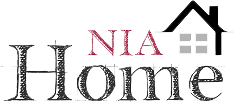Managing rental properties requires more than just finding tenants and collecting rent. Landlords and property managers must also maintain accurate documentation at every stage of the rental process, most turn to https://www.ezlandlordforms.com to support these needs. From applications to eviction notices, having the right forms protects both parties, ensures compliance, and keeps operations running smoothly.
In this guide, we’ll explain why recordkeeping is vital, review the most important rental forms for landlords and tenants, and highlight the best ways to store these documents for long-term success.
Why Landlords Must Keep Accurate Records
Operating a rental property business in Baltimore—or anywhere—comes with many responsibilities. Rent payments, security deposits, maintenance requests, and lease renewals all require documentation. Without organized records, landlords risk compliance issues, financial mismanagement, and disputes with tenants.
Here’s why proper recordkeeping matters:
- Legal Compliance – Maintaining accurate records helps landlords meet their obligations under local, state, and federal laws. Documentation also serves as evidence in disputes, complaints, or legal cases.
- Financial Management – Tracking income, expenses, and security deposits is essential for budgeting, bookkeeping, and filing taxes.
- Lease Enforcement – Lease agreements establish responsibilities for both landlords and tenants. Keeping signed copies helps enforce terms and resolve disagreements clearly.
Important Rental Forms for Landlords and Tenants
Certain forms are essential to keep communication transparent, protect legal rights, and maintain a smooth rental process. Below are the most common and valuable rental documents landlords should have on hand.
Rental Application
Used during tenant screening, this form collects personal details, rental history, employment information, and references. It allows landlords to evaluate a tenant’s suitability and helps applicants understand requirements upfront.
Lease Agreement and Renewal Forms
A lease agreement outlines terms of tenancy, including rent amount, duration, deposits, and property rules. Renewal paperwork allows both landlord and tenant to confirm continued tenancy, often updating rent or conditions without starting from scratch.
Move-In and Move-Out Checklists
These checklists document property condition at the beginning and end of a lease. They protect tenants from unfair charges for existing damage and give landlords proof when withholding part of a deposit for repairs.
Rent and Security Deposit Receipts
Receipts provide proof of payments and protect both landlord and tenant in case of disputes. If deductions are made from a deposit, landlords should also supply an itemized list.
Notice to Enter
Landlords must provide written notice before entering a tenant’s unit, except in emergencies. Notices typically explain the reason for entry and give at least 24 hours’ warning, though laws vary by state.
Late Rent Notice
When rent is overdue, this form outlines the outstanding amount, late fees, payment deadline, and potential consequences. A detailed late rent notice avoids confusion and strengthens the landlord’s position if further action is needed.
Notice to Quit or Eviction Notices
If a tenant violates lease terms or refuses to pay rent, landlords issue a notice to quit or pay. If the tenant fails to comply, an eviction notice may follow. These documents must meet state-specific requirements to be enforceable.
Best Practices for Storing Rental Documents

Organized document storage ensures landlords can quickly access important information when needed. There are two main methods:
- Physical Storage – Filing cabinets, labeled folders, and secure locks help keep paper copies safe and organized.
- Digital Storage – Cloud-based platforms such as Buildium, AppFolio, or Rentec Direct allow landlords to securely upload, organize, and retrieve documents from anywhere.
Digital storage is often preferred because it offers searchability, cloud backups, and additional features like automated reminders or document templates.
Advantages of Property Management Software
Property management software offers several benefits for landlords:
- Automated Document Creation – Quickly generate standard forms like applications or leases.
- Accessibility – Access documents anytime, anywhere.
- Security – Role-based permissions and authentication protect sensitive tenant data.
- Backup and Organization – Cloud systems provide secure storage with advanced search tools.
These tools make managing documents easier, especially for landlords with multiple properties or tenants.
Final Thoughts
Having the right rental forms isn’t optional—it’s a necessity for landlords who want to protect their investments, comply with regulations, and maintain strong tenant relationships. From applications to eviction notices, each document plays a role in safeguarding both landlord and tenant interests.
Proper organization, whether through physical filing systems or property management software, ensures these records are always accessible and secure. By staying proactive with documentation, landlords can reduce disputes, streamline operations, and focus on growing their rental business with confidence.


Comments are closed.